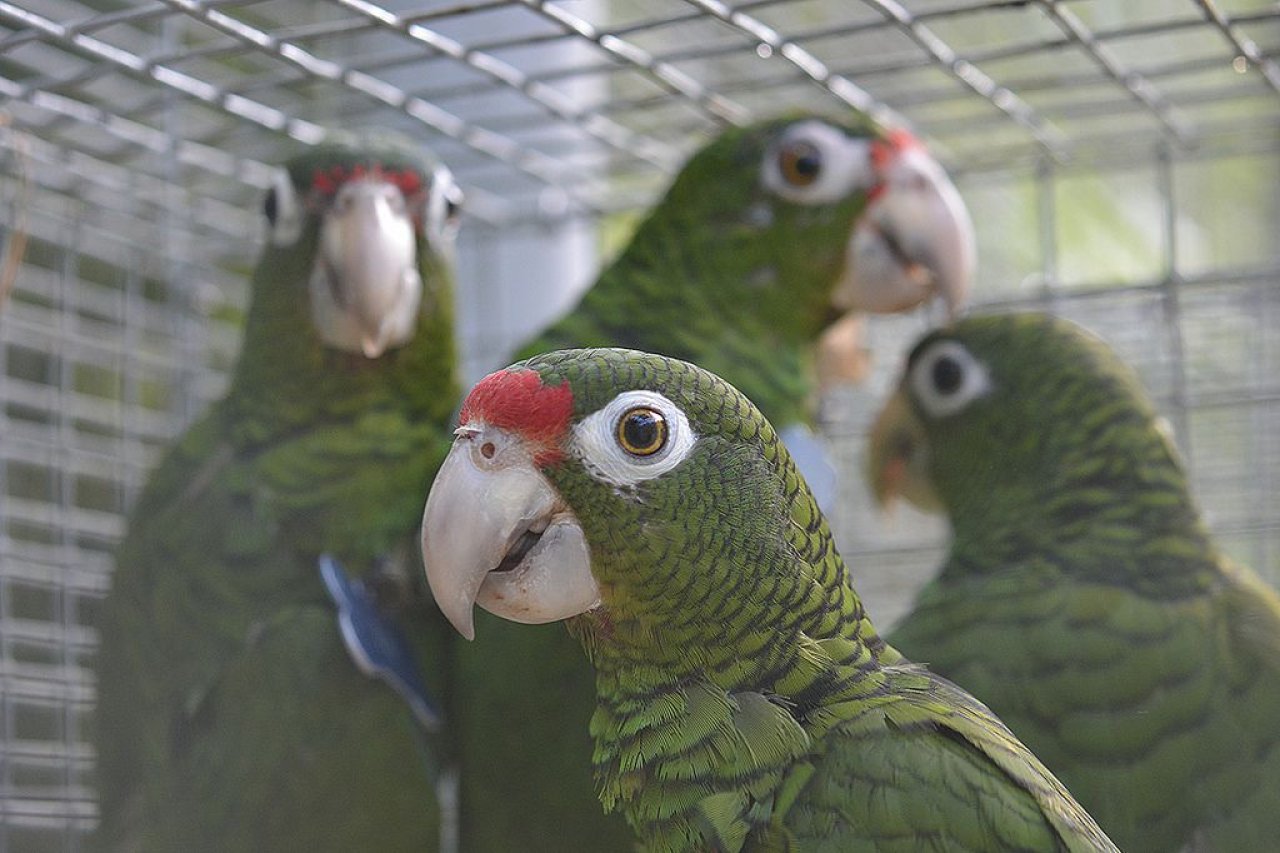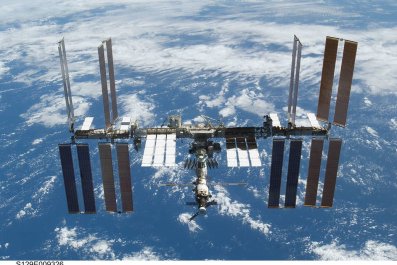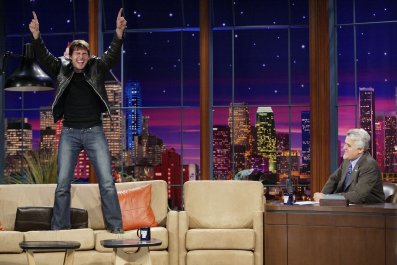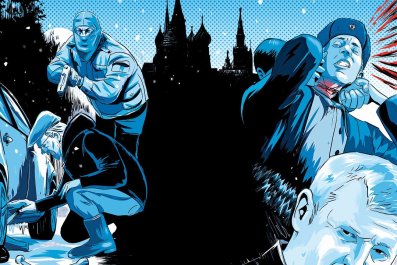When Hurricane Irma started barreling toward Puerto Rico, people across the island launched into their storm preparations. Edwin Muniz and Tom White were among them, but they had a somewhat different plan for dealing with the storm than most, seeing as they also had to ensure the safety of a bunch of bright-green individuals covered in feathers. That's because their jobs involve protecting 230 endangered Puerto Rican parrots.
The species, which has been protected for five decades, is the only parrot found on U.S. soil. Native residents nicknamed the foot-tall, red-foreheaded birds iguaca because of their chattiness. Muniz, a field supervisor at the Caribbean Ecological Services Office of the U.S. Fish and Wildlife Service (FWS), called the parrot "an icon" of the island.
By the late 1960s, however, it was in trouble, mostly because of habitat loss due to agriculture and road-building.
So the FWS began tending to the birds, which now make up three wild populations and two captive populations—including the parrots Muniz and White needed to get through Hurricane Irma's wrath at the aviary in El Yunque National Forest, in the northeast corner of the island.
Captive populations are a conservation tool because they produce birds to be released into the wild, and their success rates are higher than those of wild populations. "The captive population is a critical and integral component of our overall species recovery program," said White, an FWS parrot biologist who has worked on the island for 18 years.
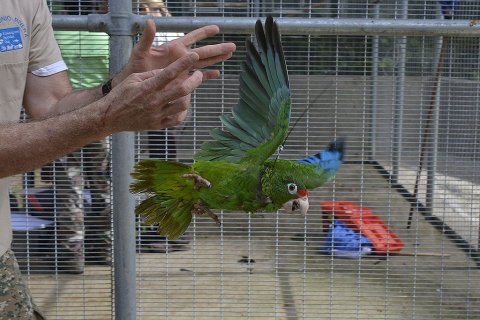
Tending to the captive populations isn't the only way the FWS is helping the Puerto Rican parrot. The birds don't build nests; instead, they lay their eggs in the hollow cavities of trees. In order to encourage reproduction, conservationists mount artificial cavities in forests to give the parrots more property listings. They also take in wild chicks that are sick or orphaned and raise them.
Hurricanes have always been a threat to Puerto Rico, and the parrots are in no way immune to them. In fact, Hurricane Hugo in 1989 killed nearly half the wild population—25 of what was then just 47 birds. There isn't much scientists can do to protect the wild parrots, but it's a different story for the captive populations.
Not every hurricane merits a response, Muniz says, but his team keeps an eye on National Hurricane Center forecasts and then decides what risk each storm poses. If it looks like a storm will be a real threat, they're ready to respond. "We always prepare. We have several protocols that we have to put in place," Muniz said. A similar procedure takes place at a second aviary, run by Puerto Rico's Department of Natural and Environmental Resources, which is home to 175 more of the birds.
For Hurricane Irma, it was clear the parrots would need to be protected. That meant gathering all 230 of them into the so-called hurricane room, a process that takes at least a few hours and sometimes half a day. "Our staff has been trained—they've done this many times," Muniz said.
The hurricane room is a concrete space large enough to hold all the parrots in suspended cages. The building's hurricane shutters are lowered.
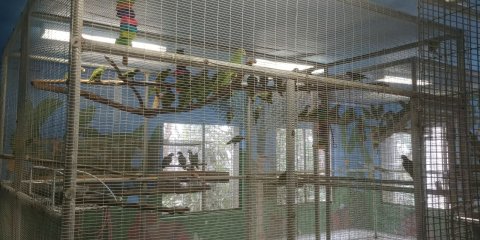
The entire aviary, which was constructed in 2007, was built to withstand hurricane-force winds and is equipped with a backup diesel generator. But the parrots can't stay there by themselves, so White and his wife, who also works for the FWS, moved into the aviary with them.
Both had experienced serious hurricanes before. "We were prepared. We knew that given the size of the hurricane, and given the damage that we anticipated to the forest and the roads, we anticipated we would be there for several days," White said. "We were confident that the building would hold up, that we would be fine."
During the storm, the pair was responsible for making sure the birds stayed safe and healthy. The parrots didn't make very courteous roommates to the biologists bunked down next door, however. "You do not need an alarm clock when 230 parrots start squawking as soon as the sun comes up," said White. "You will wake up: There's no sleeping in under those circumstances."
Morning parrot duties include changing their food and water bowls and hosing off the floor of the hurricane room to clear away their droppings. It's also important to keep an eye on the birds throughout the day. "Sometimes, when they're in a confined space, some of them get stressed out, some of them may start fighting," said White, adding that since the birds can sense barometric pressure, "I'm sure that the parrots knew instinctively that there was a storm coming."
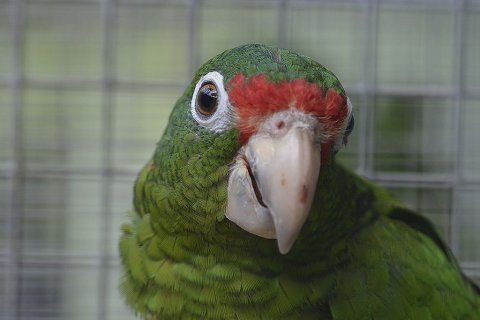
The pair of scientists arrived at the aviary on Wednesday morning; Irma hit in the late afternoon and evening. Their colleagues couldn't reach them until midday Monday because of downed trees blocking the roads.
Since Hurricane Irma hit, scientists have been able to get a first look at how the wild population fared in El Yunque National Forest, outside the aviary but in the same neighborhood. (A larger wild population in Rio Abajo, on the west side of the island, is also being monitored after Irma.) Surveys before the storm hit found about 50 birds in the area, according to Muniz, and scientists were able to reach the site by Tuesday.
The area is fairly mountainous, so it was well protected from the winds and received little damage. While the parrots were initially scattered by the storm, White said, "now those birds have started to regroup and all come back together, so we're optimistic that the wild population will pull through this quite well."



